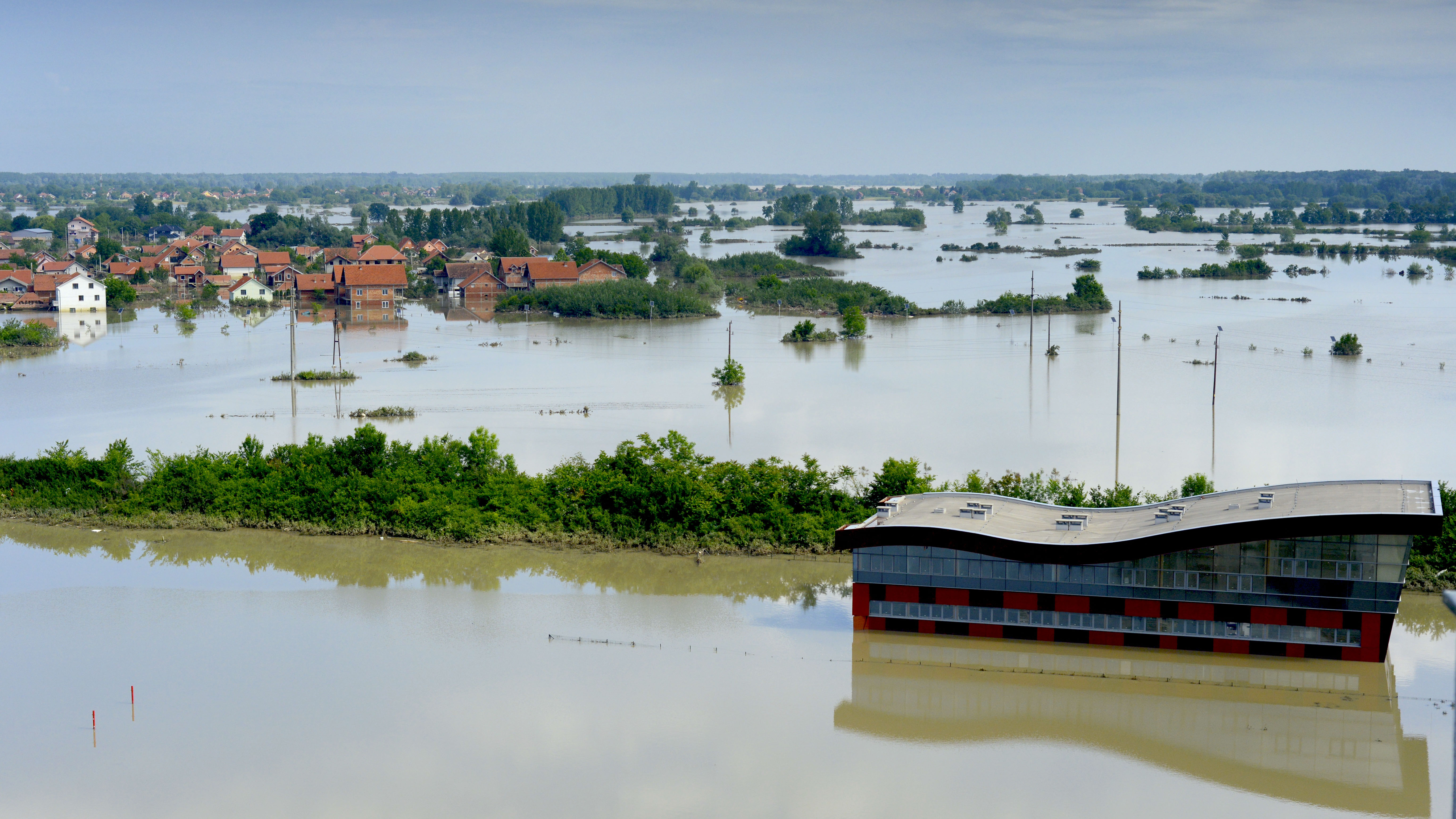Critical infrastructure must be resilient…it’s critical.
July 20, 2023

Landslides caused by flooding in Obrenovac, Serbia devastated households in the region, as it was lacking the proper infrastructure to withstand the disaster. UNDP has since worked with the local authorities and partners to rebuild the affected houses and strenghten disaster resilience in the region.
Critical infrastructure: those facilities and assets, systems and networks that provide functions we rely on for our way of life. From energy and water supply to information and communication services, from healthcare to transportation, critical infrastructure provides vital support and essential services for economic progress, national security and the functioning and inclusion of communities.
They are complex, interdependent and interconnected networks that provide an foundation for contemporary sustainable development.
A disaster in one area can have wide-ranging impacts along different chains. During the recent earthquake in Türkiye, for example, the damages to the Port of Iskenderun led global shipping company Maersk to stop all operations in the area, with economic implications and a halt of information flow.
Natural and human-made hazards, technical accidents, pandemics, climate change impacts, security risks, and cyber threats and attacks — these all can severely affect critical infrastructure systems, disrupt services for societies and have significant economic costs.
In the Europe and Central Asia region, estimates show a 60 percent rise in the cost of damages due to extreme weather events over the next 30 years.
In 2018 alone, 18 countries reported disaster-related damages to critical infrastructure facilities. The 2014 floods in Serbia and Bosnia and Herzegovina and 2019 Albania earthquake caused over US$5 billion in damages to critical infrastructure.
Technical breaches also threaten the security of critical infrastructure systems, as seen by the massive cyber attacks on Albanian institutions, attacks by hacktivists on the Montenegrin government system in 2022 or email bomb threats almost 900 education and other institutions in 2022-2023 in North Macedonia.
We cannot ignore the urgent need for building resilience into these systems across the globe.
Critical infrastructure and building resilience go hand in hand
Resilience is the ability of these systems to anticipate, withstand or absorb shocks and stresses while adapting to new conditions, resulting in a quicker recovery and transformation to better cope with chronic stresses and acute shocks in the future. It is about staying operational and functional for households, communities, businesses and institutions.
While these systems continue to advance to meet hazards, threats and challenges, they still face hurdles. There are limited capacities and knowledge to develop resilience-building-related policies across the development sectors. Resource disparity leads to under-protected and exposed infrastructure, and the potential for partnering and cooperating with the private sector is not sufficiently recognized and utilized.
Existing critical infrastructure systems in the region are reactive (protecting), rather than proactive (focused on prevention and building resilience). We must shift the paradigm from risk to resilience, from protection to designing and applying preventive measures and actions.
At the centre of this resilience-building process are the policy creators and decision-makers, government professionals, business owners and operatorsl, and citizens. UNDP developed the Guidance Notes on building critical infrastructure resilience as their practical support tool, to better evaluate needs and design appropriate policies, regulations and measures in public-private cooperation.
On a practical level, the technical checklist is a diagnostic tool for understanding the existing level and context of resilience in their countries and territories, with many proposed actions to be implemented before disasters. The notes stem from the detailed list of survey recommendations and existing global best practices. Building critical infrastructure resilience is a continuous process that requires collaboration, adaptability, and constant improvement.
We have already seen successful examples across the region:
- Since the November 2019 earthquake, Albania rebuilt 63 schools through the #EU4Schools programme. These school buildings can now withstand similar shocks and over 24,500 students and teachers are more safe;
- During the COVID-19 pandemic crisis, Armenia strengthened the preparedness and response of their key medical facilities, evaluating the disaster readiness of maternity hospitals and preparing disaster risk management plans, aiming to be better prepared for the next pandemic;
- The Kyrgyz Republic invests in the resilience of its key Bishkek-Osh road corridor, a vital artery for its society and economy, by building climate-resilient roads, establishing passport data of the road facilities and the Digital Avalanche Cadastre, and developing better road management;
- Kazakhstan joined the Get Airports Ready for Disaster (GARD) programme to build the resilience of the Almaty International Airport, which serves as a major regional humanitarian hub in Central Asia in the event of major disasters.
Potential resilience building of critical infrastructure pathways
When it comes to applying the guidance notes and anticipating the complex and uncertain futures, we have identified three potential development pathways.
A status quo scenario follows regular and ongoing activities, where everything is routine and stays the same. Most countries and territories will continue the business-as-usual approach.
An advanced straightforward scenario involves enhancing policy and regulatory frameworks, expanding institutional architecture, improving operational processes, mainstreaming critical infrastructure resilience in disaster risk management systems, climate-proofing infrastructure, and fostering partnerships between the public and private domains. Some countries and territories are already engaged in this, but still, more efforts and actions are needed.
The changing scenario involves new innovative strategies and leveraging emerging technologies to ensure robustness, adaptability and sustainability. It means designing and establishing new architecture and solutions aimed at replacing the concept of protection with the concept of the resilience of critical entities. The European Union is leading this way, and the countries and territories with the aspiration of EU membership will navigate towards achieving it.
We’re at the midpoint of the implementation of the Sendai Framework for Disaster Risk Reduction, which includes a global target to substantially reduce disaster damage to critical infrastructure and disruption of basic services by 2030. Governments need to invest more in critical infrastructure resilience. Accordingly, these guidance notes are the modus operandi for policy-makers and practitioners to navigate the path of building such critical infrastructure resilience.

 Locations
Locations